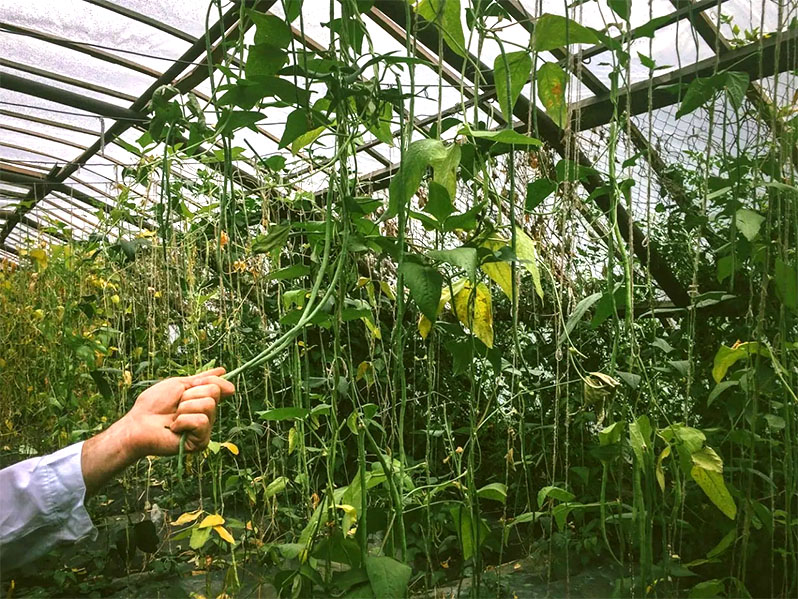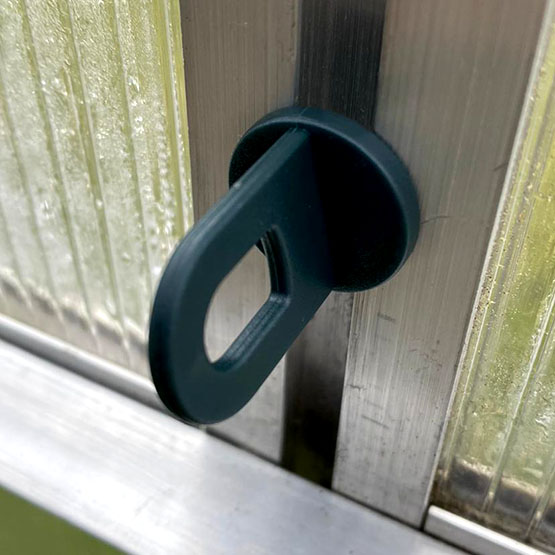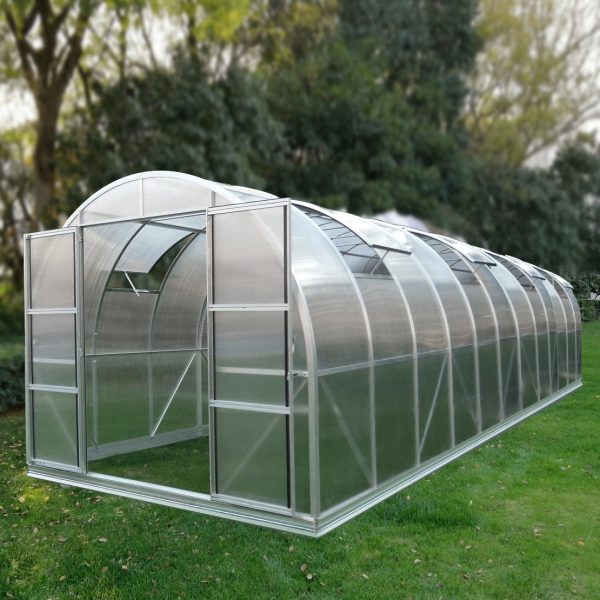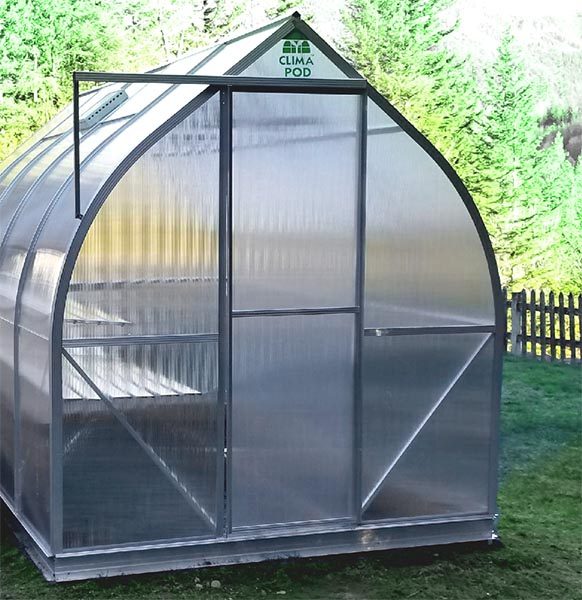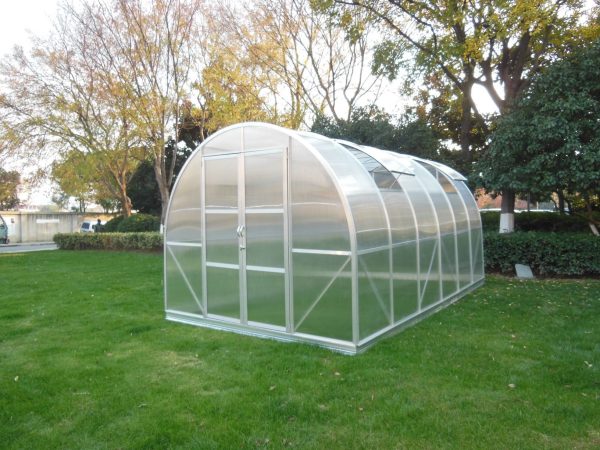Beans grown in the greenhouse must be subjected to a full range of agrotechnical measures similar to those applied to open field plants. But adjustments are made for the complexity of the contents of the greenhouse, they take into account the microclimate and problems specific to covered ground.
Watering the beans
In a greenhouse, unlike open ground, you do not need to count on rain, so growing in greenhouse requires regular watering.
Features of watering beans in a greenhouse:
- adjust the frequency of watering, focusing on the condition of the soil: so that it is moderately moistened, not dry and not wet;
- beans do not react well to heat and drought, so leaving them without water is unacceptable;
- vary the amount of water depending on the conditions: the colder and wetter it is, the less consumption;
- recommended watering time is morning or evening;
- watering only under the root – it is not recommended to pour water on the leaves;
- use only stabilized tap or well water for irrigation;
- the maximum amount of water for sowing is required from July to mid-August – 15 liters – per 1 sq.
Fertilizers for beans
Beans are sensitive to potassium-phosphorus fertilizers, but do not accept excess organic nitrogen. Humus, compost and other organic matter are deposited in the soil only during the preparation of the soil for the greenhouse.
How and what to feed beans:
- When planting, apply superphosphate – 30 g – per 1 sq.m and potash fertilizers without chlorine (suppresses nodule bacteria) – 20 g of potassium sulfate.
- Feed the beans a second time during the germination period. Add more superphosphate (15g), potassium/magnesium potassium sulfate (5g). The dosage is indicated for 1 square.
From organic phosphate fertilizers, give preference to ordinary wood ash – an aqueous solution of 200 g per 10 liters per 1 sq. The solution is poured under the root, and not on top of the sheet. - During the period of flowering and budding, it is recommended to feed beans with a solution of boric acid – 5 g – per 10 liters of water, foliar top dressing.
All feedings stop with the appearance of the first ovaries.
Weeding and loosening of beans in the greenhouse
There should be no dry, earthy crust around the beans. Loosen the soil regularly to keep the roots aerated. Their drying leads to the death of plants. Make the first filling when the sprouts grow 6-7 cm – if the beans are grown by direct sowing in greenhouse soil.
During the second loosening, pile up the bean bushes – by this time they should be about 10 cm high. Remove weeds along the way by loosening. To reduce the frequency of loosening, sprinkle the soil with mulch – hay, straw, etc.
Garter and whip formation
To make the most of the greenhouse space, tie curly bobs.
Garter Order:
- Install 1.5 m high supports or trusses in greenhouses
- Start doing the event when the plants grow to 20-30 cm. Use soft twine. When the stepchildren grow up, tie them to the supports.
- When the plants reach a height of 2m, pinch off the tops. The purpose of this procedure is to suppress the growth of the beans and redirect nutrients to the formation and maturation of the pods.
If the beans are planted in a dense bunch, the tying process can be simplified by spreading a plastic net. It is enough to tie up the plant once, then the beans will begin to climb on their own prepared supports.
Protection of beans in the greenhouse from diseases and pests
The most common bean problem is fungal diseases. In second place are viral and bacterial infections.
Most often beans get sick:
- Dusty mold. It usually appears at high humidity and is accompanied by the formation of a dirty gray coating. It can destroy up to 15% of the crop. The treatment consists in spraying the bushes with Bordeaux liquid.
- Anthracnose. The disease causes the appearance of depressed brown spots. For treatment, Fundazol or its analogues are used. There are also folk remedies – soda solution – 1 cup of powder is diluted in 10 liters of water.
- Mosaic. The beans came in green and yellow varieties. This is a viral disease. The affected areas first swell, and then rot.
The disease is incurable. Prevention is recommended: use of healthy seeds, sowing of mosaic-resistant varieties, timely control of aphids, etc.
Not only diseases, but also harmful insects can ruin the bean crop. Among them there are representatives who suck and gnaw. All of them are equally dangerous for culture.
Bean pests:
- Karioxide. The main enemy of all legumes. Small black beetles – up to 5 mm long. The method of dealing with the beetle is to keep the seeds at zero temperature.
- Sprout fly. Gray fly with black stripes on the back. Its larvae gnaw on bean seeds. Likes cold, dies from drought. Recommended substances – Karbofos, Fufanon, Iskra and their analogues.
- Weevil. Small dark oblong beetle. It feeds on roots and tubers. For the fight, the organic product Fitoverm is used, insecticides – Aktara, Iskra and others.
Harvesting beans in the greenhouse
Early varieties are harvested 60 days after germination. Late beans ripen a couple of weeks later. As they mature, the pods are harvested selectively at intervals of 5-7 days.
Plucked beans are recommended to be used immediately, and if there are a lot of them, freeze. It is impossible to store beans for a long time, they will lose their freshness. Another way to preserve is pickling. In this form, the beans are stored for 1-2 years.
If you do not collect the pods in time, the plant will quickly stop flowering, which will lead to a decrease in yield.
If you want to get a vitamin complex in beans at the beginning of summer, it is not difficult to find a small area in the greenhouse for planting. Growing an ordinary vegetable does not take much time and effort. If it is not possible to use the seedling method, then burying the seeds directly into the ground in the greenhouse will also give a result, but with a shift a week later.

